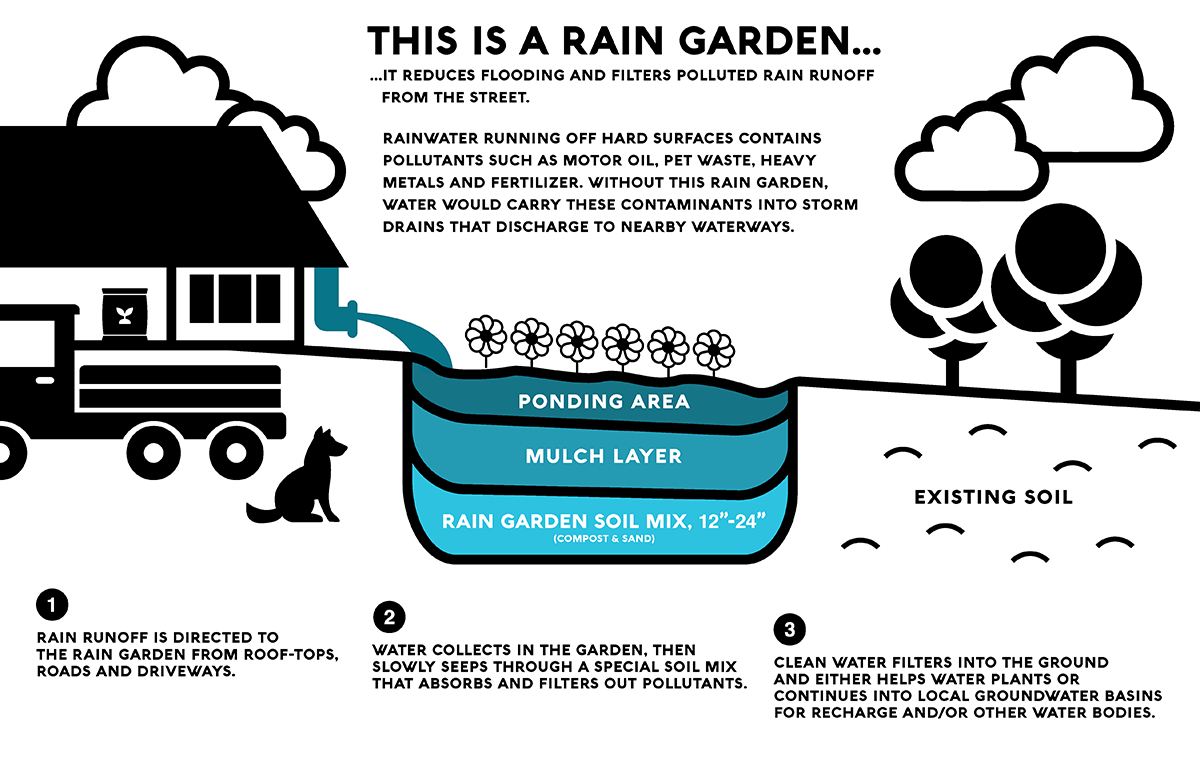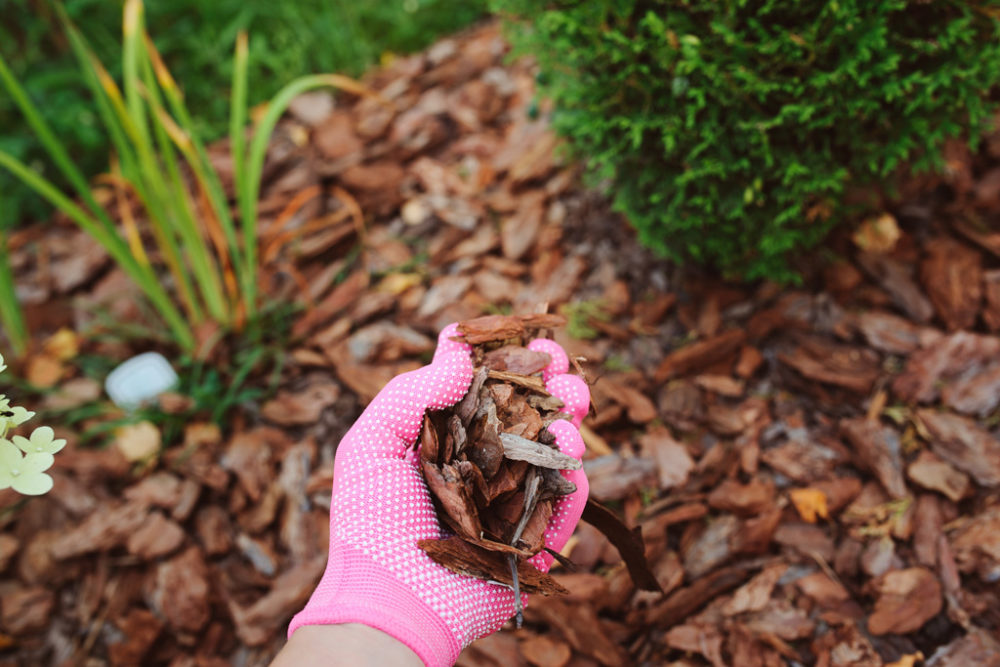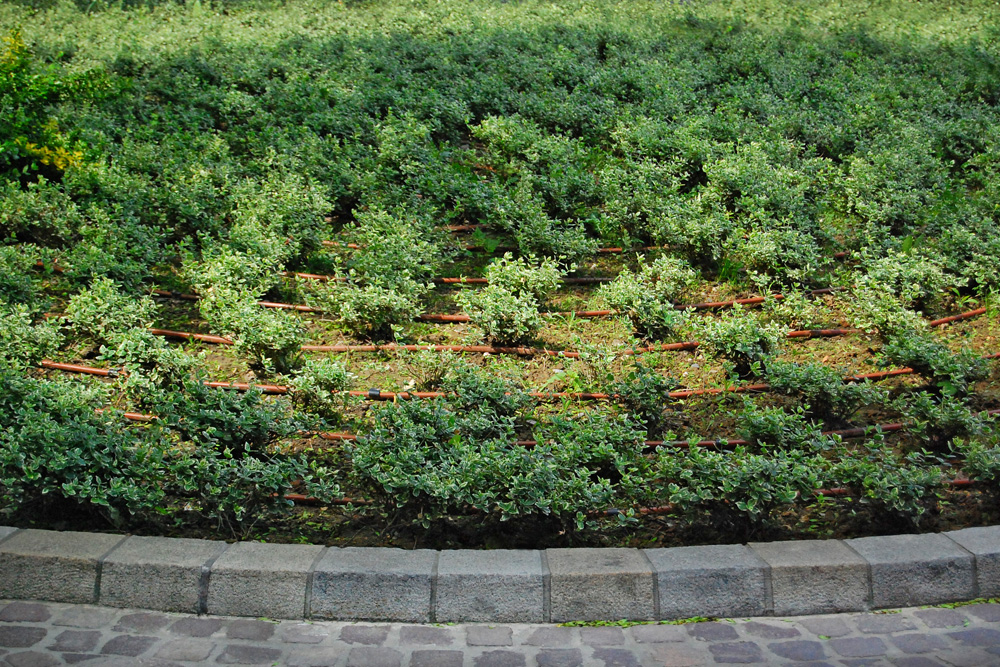Take Action: Landscape Improvement
Create a Rain Garden
Creating a rain garden captures runoff from entering storm drains and puts it to good use
A rain garden is a garden planted in a small natural or constructed depression that provides a place for runoff from roofs, lawns, driveways, and sidewalks to collect. Native or regionally adapted plants are planted within this area to create a beautiful rain garden. As the rain garden intercepts runoff, it helps keep our waterways clean!

Who Should do This?
This action is for you if you own your own home and have the space to create a rain garden! You can create smaller sized rain gardens on your own; however, larger rain gardens may need professional assistance to ensure proper engineering. Rain gardens can be created at any time, though it may be best to create one before the rainy season begins to help plants become established with less irrigation demand and milder temperatures.
How Long will it Take?
A small sized rain garden will likely take several days to create. First, the site for the garden must be chosen and dug out if necessary. Then the soil will likely need to be improved for optimal drainage, planted, mulched, and water from your downspout may need to be diverted. A large rain garden constructed with professional help may take similar amounts of time or longer.
How Much does it Cost?
Costs depend on the size of the garden, plant choices, and amount of soil improvements needed. A small rain garden typically costs between $100 and $300 if done on your own, while professional help will cost more. If you are interested in doing a complete OC Garden Friendly overhaul of your existing landscape, click here to see if you are eligible for a rebate!
What are the Benefits?
- Enhances the aesthetics of your yard
- Reduces amount of runoff going into storm drains
- Reduces amount of additional water needed to maintain garden
What is needed to get started?
- Permission to dig – call 811 to find out
- Shovel
- Leveling device
- Plants
- Soil improvements such as organic matter, depending on soil type
- Gardening gloves
- Tamper/heavy object
- Mulch
- Rocks or other method to divert downspout water
Did You Know?
Rain gardens capture runoff, keeping it onsite and reducing or eliminating runoff. Since runoff can contain contaminants that pollute our waterways, rain gardens help to keep them clean and clear! Plus, rain gardens with native plants create habitats for hummingbirds, butterflies, and other beneficial pollinators too!
Resources
Information from UC Cooperative Extension on how to create a rain garden, including site selection and plant list: click here.
General information on rain gardens, plus additional resource list: click here.
Benefits of a rain garden: click here.
More information on the function and design of rain gardens: click here.



